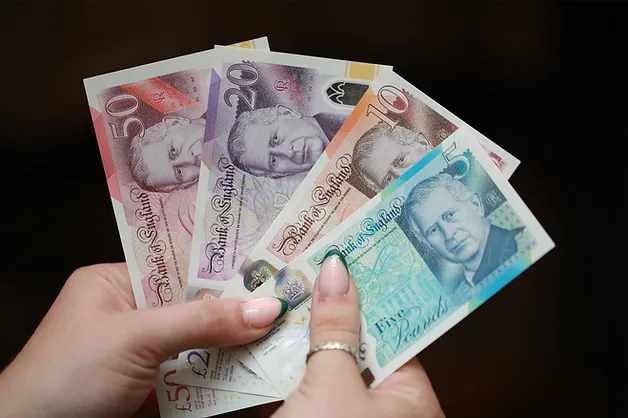King Charles III Currency Notes Introduced in the UK
Introduction of New Currency Notes
The United Kingdom has recently unveiled new currency notes featuring King Charles III. This significant update marks the first time in over seven decades that a monarch other than Queen Elizabeth II appears on British currency. The Bank of England introduced these notes, emphasizing the new design elements and security features aimed at enhancing both aesthetic and practical aspects.
Design and Features
The new currency notes depict a portrait of King Charles III, designed to reflect his royal stature while maintaining the traditional elements of British banknotes. The Bank of England has ensured that the notes incorporate advanced security features to prevent counterfeiting. These include holographic images, watermarks, and color-shifting inks, which are essential for maintaining the integrity of the currency.
Economic and Cultural Significance
The introduction of these new notes holds substantial economic and cultural significance. Economically, it signals a refreshed era for the British monetary system, potentially boosting public confidence in the nation’s economy. Culturally, this change represents a historic shift, acknowledging the reign of King Charles III and his contributions to the country. The notes are not just a means of transaction but also a symbol of continuity and change within the British monarchy.
Public Reaction and Adaptation
Public reaction to the new currency notes has been mixed, with some people expressing nostalgia for the Queen Elizabeth II notes, while others welcome the modern representation of the monarchy. The Bank of England has planned a gradual rollout to ensure smooth adaptation by businesses and the public. This phased introduction will allow existing notes to remain in circulation alongside the new ones until a complete transition is achieved.
Future Implications
Looking ahead, the introduction of King Charles III currency notes could pave the way for further updates and innovations in the British monetary system. It also raises questions about future design changes and the potential impact on international perceptions of British currency. As these notes begin to circulate, they will undoubtedly become a topic of interest both within the UK and globally.

Why This News is Important
Historic Change in Currency
The introduction of King Charles III currency notes marks a historic change in the UK’s financial landscape. For over seventy years, Queen Elizabeth II’s image has been a staple on British currency, and this update symbolizes a new era under King Charles III’s reign. This significant shift is not only about changing a portrait but also about embracing modernity while respecting tradition.
Impact on the Economy
From an economic perspective, the introduction of new notes can influence public confidence and the overall perception of the British economy. The advanced security features on the new notes aim to reduce counterfeiting, thus ensuring the stability and trust in the currency. This move is also expected to have a ripple effect on the banking and financial sectors, requiring adaptations to the new currency in ATMs, vending machines, and other automated systems.
Cultural Significance
Culturally, the new notes represent more than just a means of transaction; they are a symbol of continuity and the evolving story of the British monarchy. For students preparing for exams, understanding the cultural and historical implications of such changes is crucial. It highlights the dynamic nature of traditions and the importance of adapting to new eras while preserving heritage.
Historical Context
The Legacy of Queen Elizabeth II on Currency
Queen Elizabeth II’s portrait has been a defining feature of British currency since her accession to the throne in 1952. Her image has appeared on all denominations of notes and coins, symbolizing stability and continuity. This long-standing tradition has now evolved with the introduction of King Charles III’s portrait, marking the end of an era and the beginning of a new chapter in British history.
Previous Currency Changes
The UK’s currency has undergone several changes over the years, often reflecting significant political or social shifts. For example, decimalization in 1971 was a major change that transformed the British monetary system. Each update has required public adaptation and has often been accompanied by debates and mixed reactions, similar to the current introduction of King Charles III notes.
Key Takeaways from the Introduction of King Charles III Currency Notes
| Serial Number | Key Takeaway |
|---|---|
| 1 | The UK has introduced new currency notes featuring King Charles III. |
| 2 | These notes include advanced security features like holograms and watermarks. |
| 3 | The introduction marks the first change in monarch depiction in over 70 years. |
| 4 | Public reactions are mixed, with a gradual rollout planned for smooth adaptation. |
| 5 | The change holds significant economic and cultural implications for the UK. |
Important FAQs for Students from this News
1. Why were new currency notes featuring King Charles III introduced in the UK?
New currency notes featuring King Charles III were introduced to mark the beginning of his reign and to reflect the transition from Queen Elizabeth II’s era. This change represents both a modernization of the currency and a continuation of the British monarchy’s tradition.
2. What are the new security features included in the King Charles III currency notes?
The new currency notes include advanced security features such as holographic images, watermarks, and color-shifting inks. These features are designed to prevent counterfeiting and enhance the overall security of the currency.
3. How will the introduction of King Charles III currency notes affect the economy?
The introduction of new notes is expected to boost public confidence in the currency and the economy. The enhanced security features will help maintain the integrity of the currency, and the gradual rollout plan will ensure a smooth transition, minimizing any potential economic disruption.
4. How has the public reacted to the introduction of King Charles III currency notes?
Public reaction has been mixed, with some expressing nostalgia for the Queen Elizabeth II notes and others welcoming the new representation of the monarchy. The Bank of England’s phased introduction plan aims to facilitate smooth adaptation by businesses and the public.
5. What is the historical significance of changing the monarch’s portrait on UK currency?
Changing the monarch’s portrait on UK currency is historically significant as it marks the end of one era and the beginning of another. This change reflects the continuity and evolution of the British monarchy and has cultural and economic implications for the nation.
Some Important Current Affairs Links

















